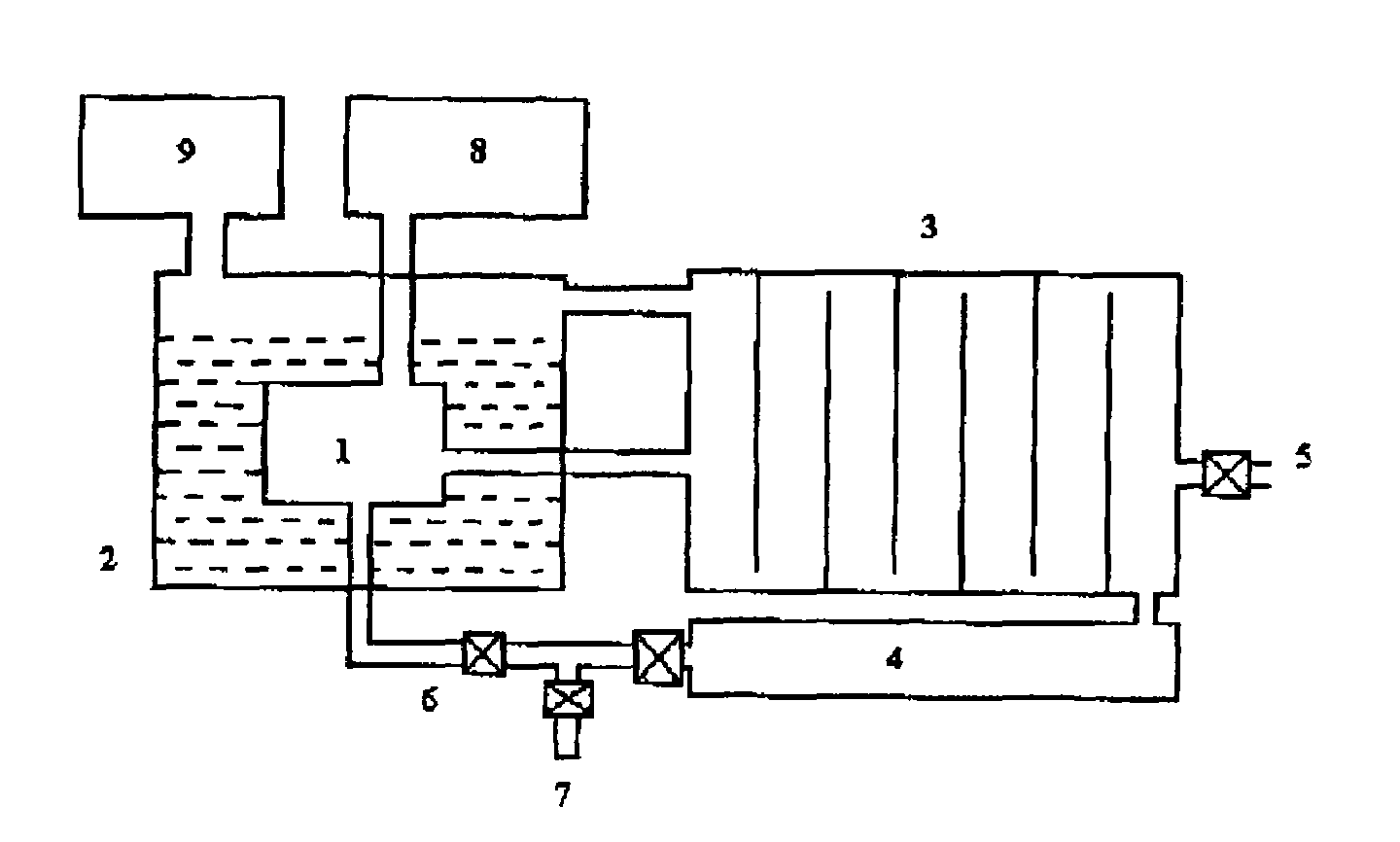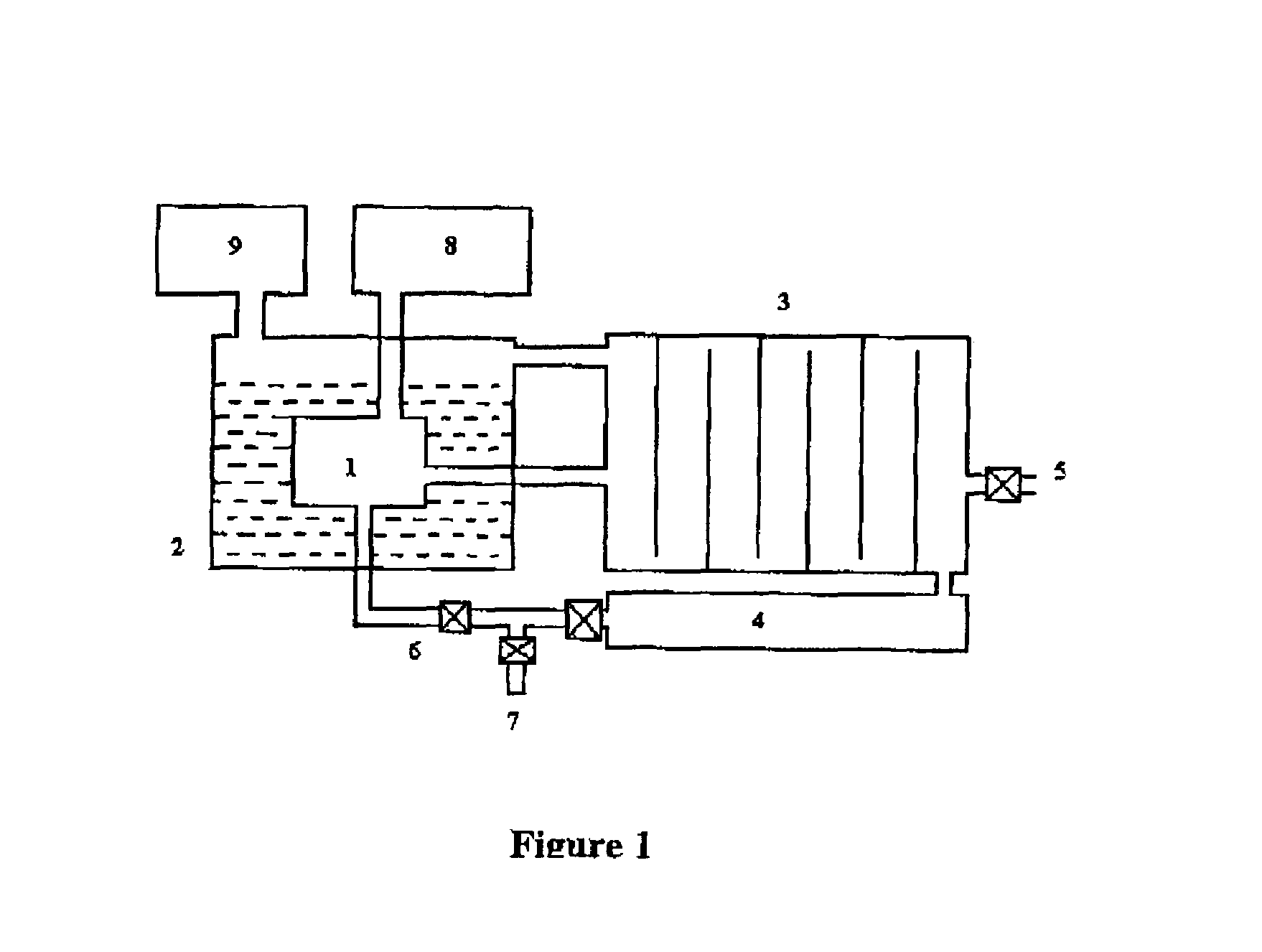Device for production of hydrogen from effluents of internal combustion engines
a technology of internal combustion engine and exhaust gas, which is applied in the direction of combustion air/fuel air treatment, machines/engines, mechanical equipment, etc., can solve the problems of harmful pollutants and no attempt to generate hydrogen from the exhaust gas of an internal combustion engine, and achieve the effect of reducing the emission of pollutants
- Summary
- Abstract
- Description
- Claims
- Application Information
AI Technical Summary
Benefits of technology
Problems solved by technology
Method used
Image
Examples
Embodiment Construction
[0028]The present invention provides a device for production of hydrogen from effluents of internal combustion engine. The device is described with reference to the figure accompanying this specification. The internal combustion engine (1) has a steam generator (2) built around and in close thermal contact therewith. The exhaust of the internal combustion engine (1) and steam generator (2) are connected to a reformer (3) provided with a plurality of slots, different catalysts being provided in each slot. The reformer (3) is provided with a first outlet and a second outlet. The first outlet is connected to a hydrogen separation membrane (4) and the second outlet (5) emits hydrogen rich fuel. The hydrogen separation membrane (4) is provided with a first outlet and a second outlet. The first outlet (6) is connected can be connected to the same or another internal combustion engine (1) and the second outlet (7) emits pure hydrogen which can be used for fuel cells.
[0029]The steam generat...
PUM
 Login to View More
Login to View More Abstract
Description
Claims
Application Information
 Login to View More
Login to View More - R&D
- Intellectual Property
- Life Sciences
- Materials
- Tech Scout
- Unparalleled Data Quality
- Higher Quality Content
- 60% Fewer Hallucinations
Browse by: Latest US Patents, China's latest patents, Technical Efficacy Thesaurus, Application Domain, Technology Topic, Popular Technical Reports.
© 2025 PatSnap. All rights reserved.Legal|Privacy policy|Modern Slavery Act Transparency Statement|Sitemap|About US| Contact US: help@patsnap.com


